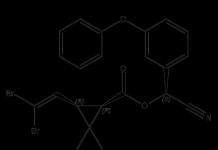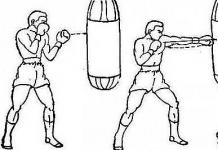
Every year more and more new trends in the art of tattooing appear, which are rapidly developing and gaining their army of fans. One of them is organic tattoo. Many tattoo artists do not consider it a separate independent style, but distinguish it as a substyle.
Distinctive Features of Organic Tattoos
Organic style tattoos date back to the late 80s of the last century. Therefore, this direction, unlike, for example, the or style, is one of the “youngest”. Its founder is American tattoo artist Guy Atchison. You can also highlight such professionals in this field as Nick Baxter and Roman Abrego. Their creations combine real and non-existent elements.

In essence, organic tattoo designs are abstract and fantasy images in the form of a symbiosis of natural components and the human body. Such drawings are chosen by people who feel harmony with nature and treat it with respect and love.
The main features of organic tattoos are:
- Patterns create positive feelings due to their richness, catchiness and color;
- The brightest colors are used, including acidic ones - red, green, orange, yellow, brown;
- Detailed execution of contours and shadows;
- They are drawn using soft and smoothed lines that fit harmoniously on the skin;
- They are often applied “Freehand” - directly to the body without a preliminary version on paper.

Organic tattoo designs are based on macro photos of natural elements:
- Seeds;
- Vegetables;
- Fruit;
- Stones;
- Minerals;

- Roots;
- Corals.
- Shipov;
- Bones;
- Algae;
- Claws.
Organic tattoo theme
The choice of subject depends solely on the imagination of the future owner of the organic tattoo. After all, this style is characterized by abstractness. The "Torn Skin" scheme is used effectively here. This technique creates a special spectacle, allowing one to look, as it were, at the human body in conjunction with the natural elements woven into it from the inside through the resulting “wound.”

Also, an organic tattoo can be in the form of an image of a living creature combined with a certain component. For example:
- Snake with algae;
- Fish among the bones;
- Butterfly against the background of bone formations.

A traditional tattoo design – a skull – has also found its place among organic tattoos.
Although many people say that biomechanical and organic tattoos are very similar areas, this is far from true. Ornaments in the second case do not contain any mechanical inclusions and are rarely made in monochrome, which is why they do not look so gloomy and aggressive.
Who and where is better to get organic tattoos?
Organic tattoos are more suitable for girls because of their colorfulness and calmer shades. They better emphasize femininity than rough biomechanical tattoos. But this is rather a general subjective opinion. There are also many fans of this trend among men, especially lovers of bright large-scale tattoos and sleeves.

Drawings of any size will look great in this style, so almost all areas of the body are suitable for them. Volumetric tattoos will look good on:
- Back;
- Breasts.
Smaller tattoos are best applied to:
- Hand;
- Shoulder;
- Thigh.

A solution that is becoming popular is a smooth transition of a pattern from one part of the body to another. This looks especially advantageous when the tattoo starts on the shoulder and then “spreads” down the arm or moves to the chest. Organics or compositions of several drawings made on various parts of the body in the form of lacerations also look impressive.

It is also possible to combine a tattoo in the organic style with biomechanical tattoos. This option will allow you to create a unique sketch that will combine dark shades and acidic colorful tones. This will be an excellent manifestation of the individuality of a particular person.

The technique of applying an organic tattoo is very complex. It is necessary to harmoniously pin all the elements onto the body step by step to create a seamless natural composition. This may require more than one session and great skill. Therefore, it is strictly not recommended to apply such an image yourself. It’s better to find a high-quality tattoo artist who can implement your idea step by step and, as a result, create a unique masterpiece.
Video: Sleeve tattoo in organic style
Organic is a fairly new direction in the art of tattooing. It appeared in the 80s, and its heyday was about 15 years ago. This style is often confused with biomechanics, but these are two different directions, you will learn how they differ from this article.
In this style of tattoo, the drawing seems to be not on the skin, but from under the skin, it looks out from the depths of the body, showing the very insides and ins and outs. It is usually made with soft and flowing lines in bright, almost acidic colors. A tattoo in the organic style allows you to experiment with color and composition as you please: the plot does not carry any semantic meaning, the design is most often abstract and is simply a decoration of the body.
By association, organics are akin to psychedelics, as hinted at by the acidic color scheme and love for fractals. Natural lines are perfect, and man, as a creature of nature, is perfect. Organic matter symbolizes the unity of the living world in all its diversity. Everything that you admire so much about this planet can be symbolically conveyed using this style: it could be plants, flowers, petals, tree bark, any biological structure. Spirals of shells and mollusks are often depicted; they carry the harmony of the golden ratio and the Fibonacci series. Macro photographs of leaves, stones and minerals are often used for tattoo sketches.
This is one of the tattoo styles where the design merges with the skin, it is part of the organism, part of the body. It emphasizes the beauty of natural forms and muscle movement. You should discuss with the artist how the tattoo will look in dynamics, with muscle tension and compression. A good master knows which image will look best on a particular part of the body. If you want to get a tattoo in the organic style, be sure to choose a professional artist with extensive experience, and first ask to see work already done in this style. This style is not for beginners and is one of the most difficult to perform: strong detailing and high skill in color are required. In many ways, how the tattoo will look depends on the quality selection of colors: they should not only be combined with each other, but be contrasting and match the client’s skin tone. This work has a lot of color, transitions, shades, details and shadows. As a result, the tattoo should practically merge with the skin, while looking natural and organic.
Organics are often confused with biomechanics; they are similar in technique, but different in essence. This style was especially popular in the 2000s in the USA. Tattoos in the bioorganic style symbolize a new era of humanity, when we have stepped into the “world of the future”, where robots and gadgets have become indispensable assistants, and a person himself, in part, becomes a robot. In tattoos of this style, a person, like an android, has some parts of his body replaced with mechanisms with chips, hoses, wires, or even a motor. Biomechanics in style refers to cyberpunk and steampunk. It is in this style of tattoo that the “torn skin” technique is appropriate and popular: a tattoo allows you to look inside the body, to see what is usually hidden under the skin.
A fairly popular design for a tattoo in this style is “torn skin” on the chest, in the place of the heart. The heart is surrounded by mechanisms and iron bands, or simply replaced by a motor. This tattoo may mean that a person once had his heart broken and henceforth he abandoned any feelings and voluntarily became a machine.

Biomechanics became popular in many ways thanks to Hans Rudolf Giger; many tattoo artists copy his work in their sketches. This is a famous master of the “fantastic realism” direction; he became known throughout the world after he acted as a designer in the film “Alien”. It was Hans who came up with the iconic image of the aliens. If you are going to get a tattoo in the biomechanical style, we recommend turning to the works of this artist.
It continues to develop and evolve, despite the fact that the “boom” of its popularity has already passed. Now craftsmen do even more detailed work than 20 years ago, all the mechanisms look as realistic as possible. The production of paints is also progressing, and now the palette of colors used for tattoos is much wider than in the 2000s, which also has a positive impact on the quality of work.

Organic and biomechanical tattoos are very similar in technique, but different in essence. Bordering symbolizes the unity of man with nature, while biomechanics symbolizes symbiosis with the world of technology, progress and gadgets. In general, these two styles do not carry a semantic load, but are designed to decorate the body.
The history of tattoos goes back about a thousand years. Priests and leaders of ancient tribes painted images on their bodies symbolizing status, social status or a totem animal. Sailors and pirates decorated the body with signs associated with their type of activity and important events in life. Until the 20th century body drawings played the role of codes, conveying certain information about their owner, which only people initiated into the secret could unravel.
The history of the appearance of the organic style in tattoos
In the 20th century The world of tattoos began to develop rapidly. Body images gradually left the realm of the sacred or secret and ceased to be perceived as signs, marks with a specific meaning, the understanding of which was accessible only to a certain circle of people. However, traditionally, themes for tattoos were drawn from the arsenal of world symbolism and mythology. This has led to the fact that the same images can be found in the criminal world, where tattoos serve as an information sign, both in a subcultural environment and on the body of ordinary people not associated with any particular social circle.
Since the end of the last century, the art of tattooing has asserted its independence and freedom. The development of the world of tattoo dough is associated with the development of painting and reflects new trends artistic art. New styles have begun to appear in the world of tattoos, based on the choice of compositions that are not directly related to any established traditions of body designs. These new styles include the organic style.
Features of the organic style
An organic tattoo, a sketch of which can be developed either by a tattoo artist or by any professional artist who knows the basics of graphics, is always interesting and unique. The organic style is based on a combination of various forms, including elements mechanics(wires, chips, boards, etc.), geometric elements, plant and animal motifs. We can say that organic tattoo designs are somewhat surreal and reflect the development of modern art.
We can highlight the following features of tattoos created in the organic style:
- Brightness, catchiness. Sometimes an organic tattoo (see photo below) can give the impression of a drawing made with felt-tip pens;
- Positivity of the composition. As details for such tattoos, elements that make a somewhat unpleasant impression are rarely chosen: fangs, blood, etc.;
- Volume. Organic style tattoos are three-dimensional, and therefore belong to tattoos with a high level of complexity;
- Merging with skin structure. Sketches of such images are developed taking into account the location of the tattoo. In this case, the shape of the elbow, the bend hands, the structure of the skin must be taken into account when creating the composition;
- Quite large size. Due to the fact that the compositions of such images are multifaceted and consist of a large number of intertwining elements, a tattoo in the organic style cannot be small.

Advice. An organic style tattoo requires the artist to have knowledge and mastery of various drawing techniques. Therefore, the choice of a master must be approached with special care. Ask him to show you the sketches he can do, ask what techniques he used, how he learned them and how often he gets to do similar tattoos. Compare the works of several masters, weigh the pros and cons.

Who is suitable for an organic tattoo?
Organic tattoos are extremely versatile and unique. Such images are applied by both boys and girls. In general, this tattoo is often done by people who:
- are fond of alternative rock, alternative and nu metal, experimental and psychedelic music;
- do yoga, are interested in meditation practices;
- read Indian And Buddhist philosophy;
- love science fiction and fantasy;
- are interested in painting and drawing, are interested in postmodernism;
- They believe that man is an integral part of nature.
Thus, an organic tattoo is suitable for extraordinary creative individuals seeking self-expression. Such people have a good imagination and appreciate in others a love of freedom, travel and self-discovery.

Popular organic tattoo elements
Working on a sketch of a tattoo in the organic style involves studying the inner world of the person on whose body the image will be applied. Organic tattoos, the meaning of which is always unique and cannot be unambiguously interpreted, necessarily have a diverse composition. The most common elements of such a tattoo include:
- Arteries, veins, heart. These naturalistic details emphasize the tattoo wearer’s love for life in all its manifestations, indicate that a person values naturalness and perceives the body as an organic whole, functioning as a system of organs and blood vessels.
- Flowers, seeds, stems growing from the body. If in traditional tattoos plant motifs are included as something external, then in organic style sketches the plant fits volumetrically into the skin and becomes one with it.
- Shells, claws, snakes, insects. Such tattoos indicate a person’s interest in the dark and not the most pleasant side of the world. In such sketches, motifs inspired

























